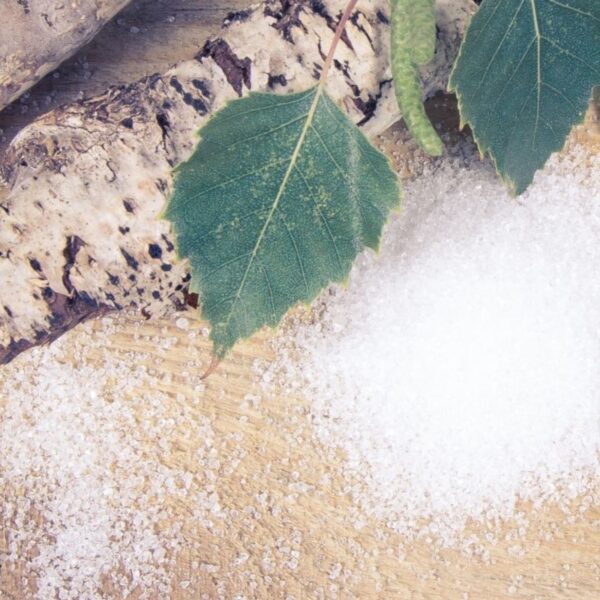Black carrot (Daucus carota L. ssp. sativus var. atrorubens Alef.) is a variety (subspecies) of carrot native to Turkey that is deep purple in color and renowned for its high levels of antioxidants. Black carrot is used in its native form as a vegetable as well as in extract form. Black carrot extract is of particular interest due to its exceptional nutritional properties.
Use of Black Carrot in the Food Industry
Black carrots can be incorporated into food in the same way as regular orange carrots. However, these deep purple vegetables have the advantage thanks to their attractive visual appeal, rich nutritional profile, and numerous health benefits.
Black carrot extract is used in the food and nutrition industry to perform various functions. The aqueous extract of black carrot is rich in anthocyanins which are potent antioxidants and color compounds. Black carrot has various functions, including the following:
- Natural colorant
- Source of anthocyanins
- Flavoring agent
- Preservative (antioxidant)
Applications in the Food and Beverage Industry
Black carrot as a vegetable has several applications in culinary preparations, as shown in the following table.
| Type | Examples |
|---|---|
| Bakery | Cakes, Cookies, Muffins |
| Confectionery | Icings, Hard Boiled Candies, Gums |
| Beverages | Flavored Beverages, Fruit Juices |
| Convenience Foods | Jams, Jellies, Powdered Beverages |
| Dairy | Ice Cream, Acidified Milk, Cream |
| Others | Soups, Salads |
Black carrot performs many functions, as the following table illustrates.
| Category | Functions |
|---|---|
| Food Products | Flavoring Agents, Colorants, Preservatives |
| Functional Foods & Beverages | Antioxidants, Colorants |
| Nutraceutical | Active Agents |
Properties of Black Carrot
| Physical Form | Property | Value |
|---|---|---|
| Uncut/ Juice/ Powder | Density Claims (*Product Specific) Appearance Storage Temperature | 0.7 g/ml (Powder) Natural, Organic*, Clean Label*, Halal*, Kosher*, Gluten-free, Non-GMO Black colored (powder/ juice/ vegetable) 4 °C for Uncut Carrot & Juice < 25 °C for powder |
| Extract | Claims (*Product Specific) Appearance Storage Temperature pH | Natural*, Organic*, Clean Label*, Halal*, Kosher*, Gluten-free, Non-GMO Black-colored liquid/ powder < 25 °C ~4.3 (Variable as per extraction method) |
Typical Formulations
Here are several considerations to take into account when using black carrot in food and nutrition products.
Physical Forms
Black carrot is available in several physical forms, which are chosen based on the final product’s functional, nutritional, and sensory requirements
| Physical Form | Examples |
|---|---|
| Fresh Vegetable | Used in raw or cooked form Diced/cut |
| Juice & Concentrate | Fresh pressed juice Juice concentrate with reduced moisture content |
| Powder | Dehydrated whole black carrot powder Dehydrated black carrot juice powder |
| Extract | Aqueous/organic extracts Extract for anthocyanin Extract for vitamin C |
Stability
Anthocyanins compounds are degraded readily in the presence of light, temperature, acids, and enzymes. Anthocyanins are stable in acidic pH. At higher pH (> 4), anthocyanin pigment gets degraded into phenolic acids. The stability statistics of anthocyanins in black carrot juice are provided in the table below.
| Attribute | Stability |
|---|---|
| Heat | 70-90 °C |
| Light | Stable |
| Oxidative | Stable |
| Color | Stable <4.0 pH |
Although processing leads to the degradation of anthocyanins and phenolic compounds, in black carrots, the stability of anthocyanins and other phenols to temperature and pH are reported to be significantly higher than anthocyanins present in purple-flesh potatoes and grapes. They are more stable to light, pH (3.0 to 5.0), and hydration.
Nutritional Profile
Black carrot is a good source of major micronutrients and phytochemicals — and contains significant amounts of dietary fiber, vitamin A, and potassium. Additionally, black carrot has small amounts of other vitamins and minerals, such as vitamin C, magnesium, and calcium. Fresh black carrots are very low in calories.
Anthocyanins
The total anthocyanin content in black carrots is estimated at up to 350 mg/100g. Over half are acylated anthocyanins, which are acylated with ferulic, p-hydroxybenzoic, p-coumaric, and sinapic acids.
Phenolic Compounds
Black carrot also contains a good amount of phenolic acids. Hydroxycinnamic acid in black carrot is recognized as the main derivative of phenolic acids. Black carrot has the highest amount of free phenolics (~290.0 mg gallic acid equivalents per 100 g), which is significantly higher than the other carrot varieties.
Micronutrients
The micronutrient profile of black carrot per 100g is as follows.
| Vitamins and Other Components | Amount |
|---|---|
| Vitamin C, Total Ascorbic Acid | 5.9 mg |
| Thiamin | 0.066 mg |
| Riboflavin | 0.058 mg |
| Niacin | 0.983 mg |
| Pantothenic Acid | 0.273 mg |
| Vitamin B6 | 0.138 mg |
| Folate, Total | 19 µg |
| Choline, Total | 8.8 mg |
| Betaine | 0.4 mg |
| Vitamin A, RAE | 835 µg |
| Anthocyanins | 1.5-126 mg |
| Vitamin A, IU | 16706 IU |
| Lycopene | 1 µg |
| Vitamin E (alpha-tocopherol) | 0.66 mg |
| Vitamin K (phylloquinone) | 13.2 µg |
| Lutein and Zeaxanthin | 256 µg |
| Tocopherol, Beta | 0.01 mg |
| Tocotrienol, Alpha | 0.01 mg |
Sensory Attributes
Black carrot’s sensory attributes have a significant effect on foods. Consider the following.
Fresh Black Carrots: Black carrots have a sweet and earthy taste, similar to other carrot varieties. They are typically slightly more tender than orange carrots. There are different cultivars of black carrot, including Antonina, Beta Sweet, Deep Purple, and Purple Haze, with each having an identifiable variation in color. The sensory and nutritional properties differ slightly as well.
Black Carrot Extract: Once extracted from fresh black carrot, anthocyanins do not necessarily carry the same black (or dark purple) color. The color of anthocyanins is a function of the pH of the environment. The anthocyanin compounds (majorly cyanidin glycosides) from black carrot exhibit attractive red shades close to FD&C Red 40 (Allura Red). Anthocyanin imparts a brilliant peach-red shade at acidic pH. Meanwhile, at higher pH values, anthocyanin will provide a faded blue color.
Black Carrot Formulation Examples
Cake
Here is an example of a cake formulation table with black carrot pomace along with the % weight of ingredients.
| Ingredient | % Composition |
|---|---|
| Margarine | 9 % |
| Egg | 19 % |
| Sugar | 13 % |
| Flour | 20 % |
| Baking Powder | 0.8 % |
| Black Carrot Pomace | 7 % |
| Water | Make up to 100 % |
Jam
Here is an example of a strawberry jam formulation table with black carrot juice concentrate along with the % weight of ingredients.
| Ingredient | % Composition |
|---|---|
| Strawberries | 50 % |
| Sugar | 50 % |
| Sugar | (Adjust to 68°Brix) |
| Black Carrot Juice Concentrate of 65°Brix | 0.5 % |
Health Benefits of Black Carrot
Black carrot’s richness in polyphenols makes it a highly functional food known for its exceptional content of anthocyanins, phenolic acids, flavanones, and flavonols. Various in-vivo and in-vitro studies have contributed to reporting the health benefits associated with fresh black carrot and black carrot extract.
Black carrot extract has exhibited a protective role against oxidative stress. Its antioxidant properties can be attributed to its phenolic compounds and anthocyanins. Black carrot has also been found to have a significant effect on reducing inflammation by inhibiting inflammatory pathways. Protection from free-radical damage helps in improving the immune function of the body. Commonly-recognized health benefits are as follows:
- Antioxidant activity
- Anti-inflammatory
- Boosts immune system
- Improves digestion
- Prevention of (oxidative stress-induced) metabolic disorders
- Eyesight improvement
- Helps control diabetes
- Helps in weight loss
Black Carrot Safety & Regulatory Considerations
Black carrot must be grown and handled in accordance with Good Agricultural Practices (GAPs) to ensure safety. Black carrot juice is covered under EU Food Additives Regulation EC No.1333/2008: E163 Anthocyanins, USA Food Additives CFR Title 21 Part 73.260 Vegetable Juice. Black carrot extract should contain >3% anthocyanins.
Additional Sources & Resources
- FAO – Black Carrot Extract
- Research Gate – Characterization of black carrot (Daucus carota L.) polyphenols; role in health promotion and disease prevention: An overview
- The Pharma Journal – Utilization and characteristics of black carrot (Daucus carrot L.): Potential health benefits and effect of processing
- CAB Direct – Evaluation of bioactive properties of Indian carrot (Daucus carota L.): a chemometric approach.
- USDA – Carrots, raw
- Science Direct – Polyphenolic profile and biological activities of black carrot crude extract (Daucus carota L. ssp. sativus var. atrorubens Alef.)






